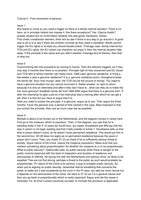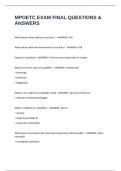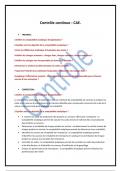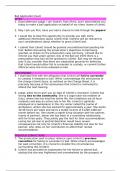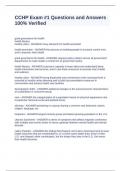A Level Psychology – Paper 2 – Key Approaches
The Key approaches –
The Biological Approach –
Key Assumptions;
Behaviour is determined by genetics, brain structure and hormones
The Central Nervous System, especially the brain is essential for thought and behaviour
Chemical imbalances can lead to mood and mental disorders
The theory of evolution has helped explain how humans have evolved
Hormones – Chemicals within the body that control cells or organs and have been found to affect
behaviour
Genetics – A biological area that focuses upon the role of DNA affecting our behaviour
It is highly deterministic
Nature side of the debate
Uses experiments, case studies and twin/adoption studies
The influence of genes;
Within most cells in the human body, there is a nucleus (this contains 46 chromosomes).
Chromosomes are made up of a chemical called deoxyribose nucleic acid (DNA). The DNA in each
chromosome carries information called genes.
Through research on the genetic influence on behaviour, mainly conducted on non-human species,
psychologists are able to manipulate certain genes in order to measure the effects on behaviour.
Genetic mapping, genetic engineering and selective breeding have contributed to out understanding
of the genetic basis of behaviour.
Genotypes/Phenotypes;
Genotype refers to an individual’s genetic make-up. This is a particular set of genes that the individual
possesses.
Phenotype refers to observable characteristics, or traits, that are shown by the individual. These can
include height or eye colour.
An individuals genotype is the major influencing factor in the development of their phenotype, but
not the only one, as phenotypes can be affected by the environment too.
Genotype + Environment = Phenotype
Example; Identical twins share the exact same genotypes. If they were separated at birth, one twin
might be raised completely differently to the other one and therefore display different Phenotypes.
Twins;
Monozygotic twins – Identical twins and have the same sperm and the same egg.
Dizygotic twins – Non-identical twins and have a different sperm and egg.
Twin studies;
These are often used to see if behaviours are shared by those who are genetically similar. It is easy to
see what traits are shared between the twins by looking at concordance rates, the likelihood that if
one twin will have a trait, the other one will too.
Twins are used to analyse behaviour because, if one Monozygotic twin has a characteristic and the
other twin also does, then the characteristic might be genetic. E.g. If one twin has Schizophrenia, they
can work out the likelihood that the other twin will develop it.
Dizygotic twins, who are basically just like other siblings, might show a much lower concordance rate,
as they have different genetic makeup. However, if they share the same environment, they could
have the same environmental characteristics.
Original Author – P E McLeod
, In addition to studying this, the study of separated twins is also conducted. If the twins are similar,
despite being separated, it supports the role of genes (Nature). If they are different, then this
supports the role of the environment (Nature).
Adoption Studies –
Studying adopted children is a way of determining whether behavioural traits are the result of nature
or nurture. They have no common genes with their adopted families, but share the same
environment. They have 50% of common genes with their parents, but not the same environment.
For example, If a child has a high IQ, and so does the biological mother, but the adopted parents have
average IQ’s, it can be determined that the child’s IQ is result of the biological mothers genetics.
😊 This theory is highly scientific
😊 There are real world applications
😊 The theory of evolution has helped our understanding of behaviour
😊 The use of animals overcomes ethical issues
☹ It ignores environmental influences
☹ People believe it is too simplistic
☹ There are ethical issues surrounding things like Genetic mapping
Key study;
Dabbs – Hormones in prisoners
Aim: To investigate the influence of hormones on aggression in males
Method: Dabbs investigated testosterone levels in male prisoners who had committed serious
offences such as rape and murder, compared to the results of a control group.
Results: Prisoners who had committed violent offences were found to have higher testosterone levels
than the control group.
Conclusion: Testosterone affects aggression, which explains why males are the more aggressive sex.
Discussion: The study was correlational, which means that no cause and effect could be established.
This means that we do not know for definite that the testosterone leads to aggression, or whether
aggression increases the levels of testosterone. This means that we cannot be certain that biology
causes differences in genders, just because there appears to be a relationship between the two.
The behaviourist Approach –
Key assumptions;
Behaviour is learnt through the environment via a stimulus-response link
All behaviour should be studies in an objective way
Animals can be used to investigate psychological principles, such as operant and classical conditioning
Behaviours can be shaped though operant conditioning through consequences (positive and negative)
and classical conditioning (association)
It is deterministic
Nurture side of the debate
Uses experimental method
Original Author – P E McLeod
The Key approaches –
The Biological Approach –
Key Assumptions;
Behaviour is determined by genetics, brain structure and hormones
The Central Nervous System, especially the brain is essential for thought and behaviour
Chemical imbalances can lead to mood and mental disorders
The theory of evolution has helped explain how humans have evolved
Hormones – Chemicals within the body that control cells or organs and have been found to affect
behaviour
Genetics – A biological area that focuses upon the role of DNA affecting our behaviour
It is highly deterministic
Nature side of the debate
Uses experiments, case studies and twin/adoption studies
The influence of genes;
Within most cells in the human body, there is a nucleus (this contains 46 chromosomes).
Chromosomes are made up of a chemical called deoxyribose nucleic acid (DNA). The DNA in each
chromosome carries information called genes.
Through research on the genetic influence on behaviour, mainly conducted on non-human species,
psychologists are able to manipulate certain genes in order to measure the effects on behaviour.
Genetic mapping, genetic engineering and selective breeding have contributed to out understanding
of the genetic basis of behaviour.
Genotypes/Phenotypes;
Genotype refers to an individual’s genetic make-up. This is a particular set of genes that the individual
possesses.
Phenotype refers to observable characteristics, or traits, that are shown by the individual. These can
include height or eye colour.
An individuals genotype is the major influencing factor in the development of their phenotype, but
not the only one, as phenotypes can be affected by the environment too.
Genotype + Environment = Phenotype
Example; Identical twins share the exact same genotypes. If they were separated at birth, one twin
might be raised completely differently to the other one and therefore display different Phenotypes.
Twins;
Monozygotic twins – Identical twins and have the same sperm and the same egg.
Dizygotic twins – Non-identical twins and have a different sperm and egg.
Twin studies;
These are often used to see if behaviours are shared by those who are genetically similar. It is easy to
see what traits are shared between the twins by looking at concordance rates, the likelihood that if
one twin will have a trait, the other one will too.
Twins are used to analyse behaviour because, if one Monozygotic twin has a characteristic and the
other twin also does, then the characteristic might be genetic. E.g. If one twin has Schizophrenia, they
can work out the likelihood that the other twin will develop it.
Dizygotic twins, who are basically just like other siblings, might show a much lower concordance rate,
as they have different genetic makeup. However, if they share the same environment, they could
have the same environmental characteristics.
Original Author – P E McLeod
, In addition to studying this, the study of separated twins is also conducted. If the twins are similar,
despite being separated, it supports the role of genes (Nature). If they are different, then this
supports the role of the environment (Nature).
Adoption Studies –
Studying adopted children is a way of determining whether behavioural traits are the result of nature
or nurture. They have no common genes with their adopted families, but share the same
environment. They have 50% of common genes with their parents, but not the same environment.
For example, If a child has a high IQ, and so does the biological mother, but the adopted parents have
average IQ’s, it can be determined that the child’s IQ is result of the biological mothers genetics.
😊 This theory is highly scientific
😊 There are real world applications
😊 The theory of evolution has helped our understanding of behaviour
😊 The use of animals overcomes ethical issues
☹ It ignores environmental influences
☹ People believe it is too simplistic
☹ There are ethical issues surrounding things like Genetic mapping
Key study;
Dabbs – Hormones in prisoners
Aim: To investigate the influence of hormones on aggression in males
Method: Dabbs investigated testosterone levels in male prisoners who had committed serious
offences such as rape and murder, compared to the results of a control group.
Results: Prisoners who had committed violent offences were found to have higher testosterone levels
than the control group.
Conclusion: Testosterone affects aggression, which explains why males are the more aggressive sex.
Discussion: The study was correlational, which means that no cause and effect could be established.
This means that we do not know for definite that the testosterone leads to aggression, or whether
aggression increases the levels of testosterone. This means that we cannot be certain that biology
causes differences in genders, just because there appears to be a relationship between the two.
The behaviourist Approach –
Key assumptions;
Behaviour is learnt through the environment via a stimulus-response link
All behaviour should be studies in an objective way
Animals can be used to investigate psychological principles, such as operant and classical conditioning
Behaviours can be shaped though operant conditioning through consequences (positive and negative)
and classical conditioning (association)
It is deterministic
Nurture side of the debate
Uses experimental method
Original Author – P E McLeod



